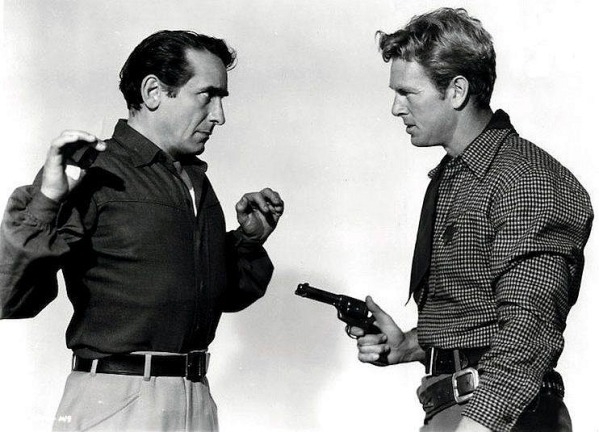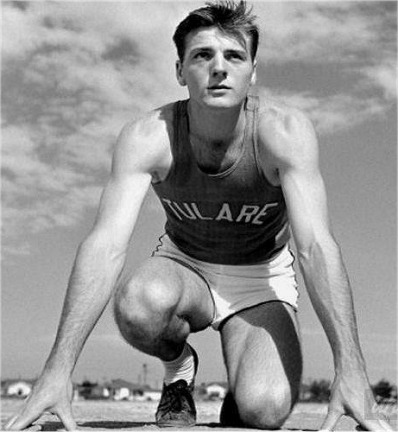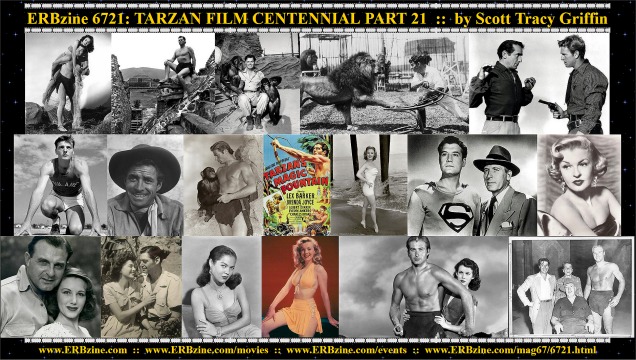
The First and Only Weekly Online Fanzine Devoted to the Life and Works of Edgar Rice Burroughs Since 1996 ~ Over 15,000 Webpages in Archive |

The First and Only Weekly Online Fanzine Devoted to the Life and Works of Edgar Rice Burroughs Since 1996 ~ Over 15,000 Webpages in Archive |

Actor Sterling Hayden, seen here on the right opposite John Payne in a still from "El Paso" (1949) was producer Sol Lesser's favored candidate to replace Johnny Weissmuller in the popular RKO Tarzan series |

Bob Mathias, who won the 1948 Olympic decathlon as a 17-year-old high-school graduate, was also wooed by producer Sol Lesser to replace Johnny Weissmuller on RKO's popular Tarzan film series |
|
|
|
|

Click for full-size promo collage
![]()
Celebrate the 100th Anniversary
of Tarzan of the Apes in film with
SCOTT TRACY GRIFFIN and his
TARZAN ON FILM
PART I :: PART
II :: PART III
:: PART IV :: PART
V :: PART VI ::
PART
VII :: PART VIII::
PART
IX
:: PART X
:: PART XI:: PART
XII::
PART XIII::
PART
XIV::
PART XV::
PART
XVI::
PART XVII
::
PART XVIII
:: PART XIX :: PART
XX :: PART
XXI::
PART XXII::
PART
XXIII:
![]()
ERBzine SILVER SCREEN SERIES
www.ERBzine.com/movies
![]()
TARZAN AND THE MERMAIDS
www.erbzine.com/mag6/0628.html
http://www.erbzine.com/mag6/0628a.html
TARZAN'S MAGIC FOUNTAIN
http://www.erbzine.com/mag6/0629.html
http://www.erbzine.com/mag6/0629a.html
TARZAN AND THE SLAVE GIRL
http://www.erbzine.com/mag19/1950.html
http://www.erbzine.com/mag19/1950a.html
![]()
![]()
![]()
![]()

BILL
HILLMAN
Visit
our thousands of other sites at:
BILL
AND SUE-ON HILLMAN ECLECTIC STUDIO
ERB
Text, ERB Images and Tarzan® are ©Edgar Rice Burroughs, Inc.-
All Rights Reserved.
All
Original Work ©1996-2018/2019 by Bill Hillman and/or Contributing
Authors/Owners
No
part of this web site may be reproduced without permission from the respective
owners.